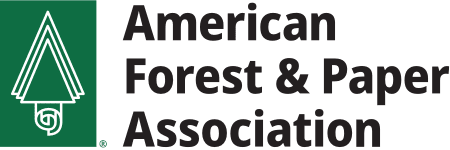The Facts About EPR Legislation in New York
New York State has considered extended producer responsibility (EPR) legislation for the past few years. But EPR isn’t the answer. It raises costs for families, ignores the strength of their existing recycling system, and overlooks the success of paper recycling.
The American Forest & Paper Association opposes EPR efforts that include paper and paper packaging. EPR should focus on materials with low recycling rates.
EPR Raises Costs for Families
Extended producer responsibility programs could make life more expensive for New Yorkers. A study shows the proposal could cost industry $1.3 billion, which is more than double earlier estimates.
Those costs don’t stay with companies. They show up in higher prices for everyday essentials. For a family of 4, that means an extra $38–$61 every month, up to $732 a year. And the burden falls hardest on lower-income households, who spend more of their income on packaged food compared to higher-income families.

A study by the Business Council of New York State found 56% of New Yorkers believe EPR legislation would increase costs for everyday products. 63% of New Yorkers worry that EPR could raise grocery prices, and 82% fear the policy could limit their product choices.
California hit pause on its own EPR rollout because of these steep costs. New York can build strong recycling policy without putting this kind of strain on families.
New York Already Has a Strong Recycling System
New York doesn’t need EPR to improve recycling because the foundation is already strong. Today, 97% of New Yorkers already have access to recycling programs that collect a wide range of materials. In fact, 76% of all paper and packaging generated in the state can be recycled through existing curbside programs.
What’s missing in New York isn’t infrastructure, it’s participation. What holds the system back are:
- A lack of education and outreach
- Sign-up requirements
Research from the Recycling Partnership shows participation increases when families are automatically signed up for recycling programs instead of having to opt in. Yet 40% of households in New York must proactively enroll for service.
Recycling Partnership research also shows that a $10 per household investment is needed to drive real results. Yet municipalities spend just $1.12 on average per household on outreach and education.
New York doesn’t need extended producer responsibility. They need to invest in education and make recycling easy for every household.
Paper Recycling Already Works in New York
Paper recycling is one of New York’s biggest success stories. Today, paper and paper packaging are among the most recycled materials in the state:
- 68%: Old newspaper
- 55%: Softcover books
- 48%: Cardboard
Many everyday paper and paper packaging products are widely accepted for curbside recycling, including:
- Paper bags
- Office paper
- Cardboard boxes
- Magazines
- Newspaper
- Paperboard boxes
- Pizza boxes
- Shredded paper
- Telephone books
- Certain types of cartons
- Molded fiber packaging like egg cartons
New York doesn’t need costly mandates to improve paper recycling. It needs smart investments in education for their residents.
